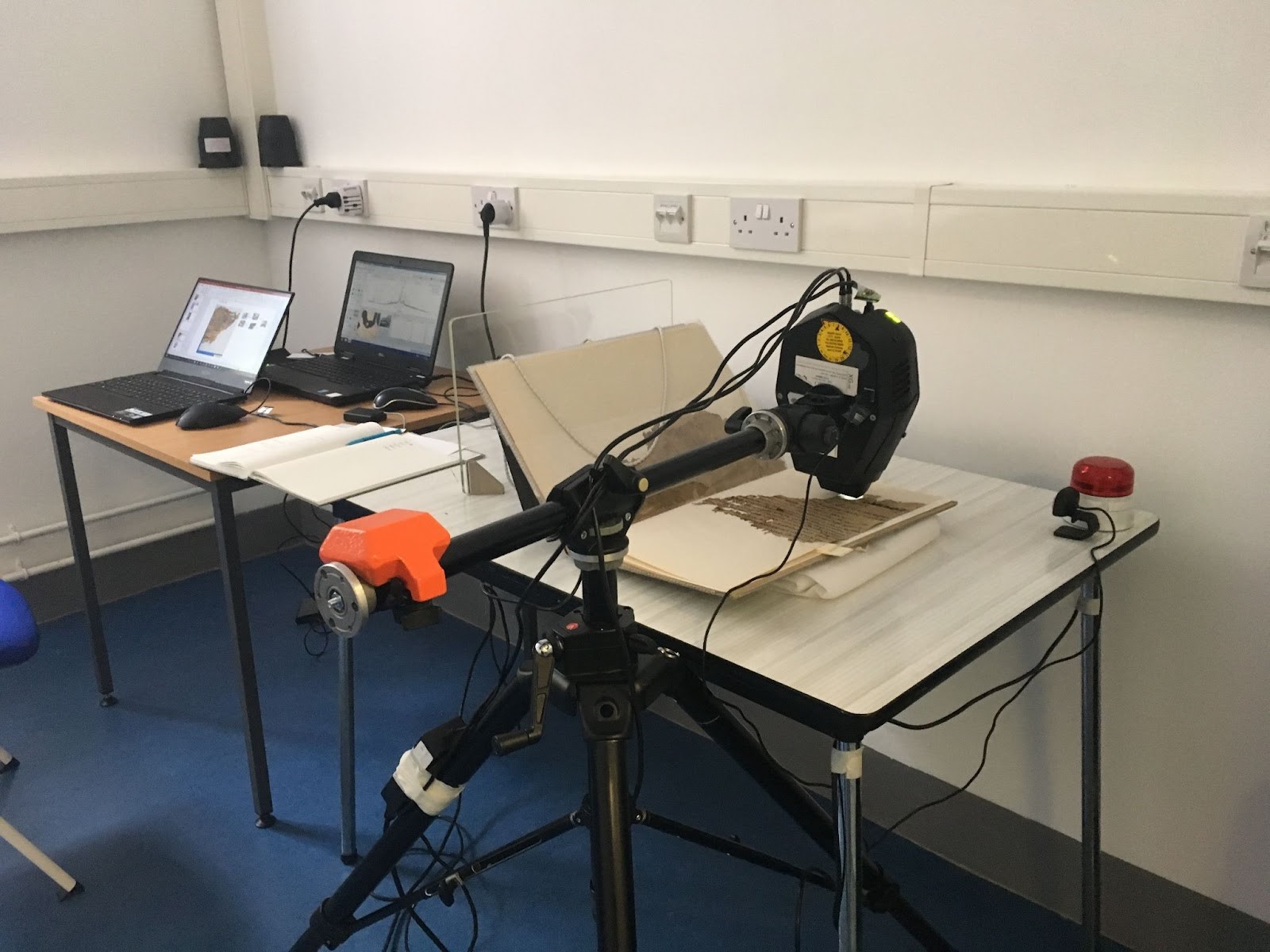XRF-Spectrometer; Elio, Bruker/XGLab

CSMC
For a quick elemental analysis of inks or pigments with areas of interest of 1 mm, the Bruker-XGLab Elio XRF spectrometer is preferred. Semi-quantitative analysis can also be done with this device, allowing comparison of inks and pigments.
For transportation, it comes as a sport bag for the tripod (120 x 20 x 20 cm), and a small box containing the spectrometer, accessories, and a lead glass shield (50 x 45 x 22 cm). The whole equipment when packed is fairly light (about 15 kg) and can be easily transported by one person, even in stairs, and can be set up quickly (about 45 min).
- General description: XRF-spectrometer; no preparation of the sample required, non-destructive, easily transportable equipment, 2D scan mapping possible (with motorised stage, requiring a larger and heavier transport case)
- Application aim: elemental analysis
- Mobility: mobile device: ca. 8 kg in total, can be packed in a small suitcase + sport bag for tripod (about 15 kg in total when in boxes)
- Equipment specifics:
- X-ray source: 1 W Rh tube
- 10-50 kV, 5-200 μA, 4 W
- Laser assisted focus, with built-in camera
- 17 mm2 large area silicon drift detector (SDD) with CUBE technology
- Application requirements: controlled temperature, 18-25 oC and relative humidity ≤ 80%, safety requirements (X-rays)
- Sample required: no, surface to analyse needs to be somewhat flat
- Contact required: no
- Interaction spot dimensions: ~ 1 mm
- Limitations: interaction spot too large for the analysis of some small details
- Set up time: ca. 30 min for warming up the tube and calibration against a standard metallic alloy plate made of copper and silver
- Average time for measuring: 30 s - 5 min per spot + set up time
- Average time for processing: about 5-10 min per spectrum
- Operating system: Windows 10
- Software package: Windows 10, XGLab, Bruker Spectra
- Output: .xga (stores whole projects ~ several MB) or .spx (for individual spectra ~15 KB)
- Contact: Sebastian Bosch, sebastian.bosch"AT"uni-hamburg.de
- Location of the equipment: CSMC Lab (Warburgstr. 28, Hamburg)
